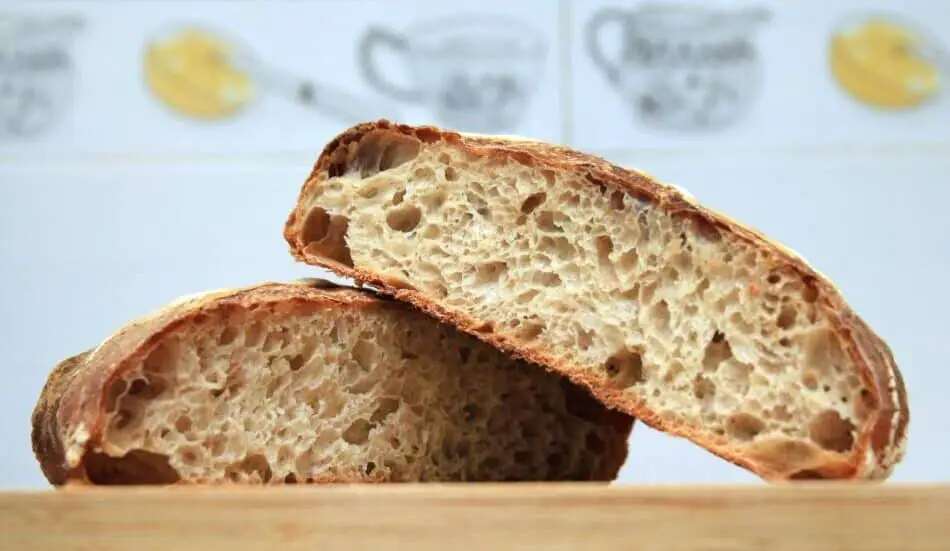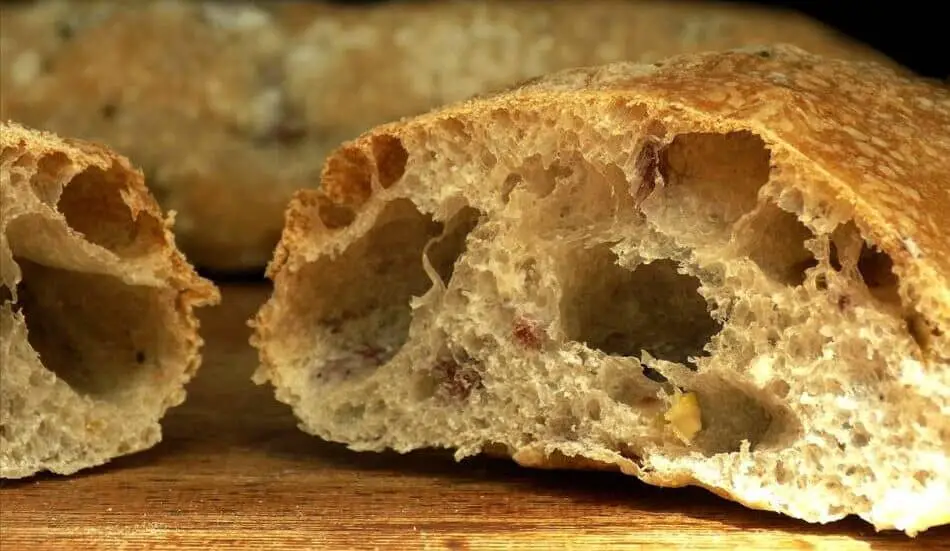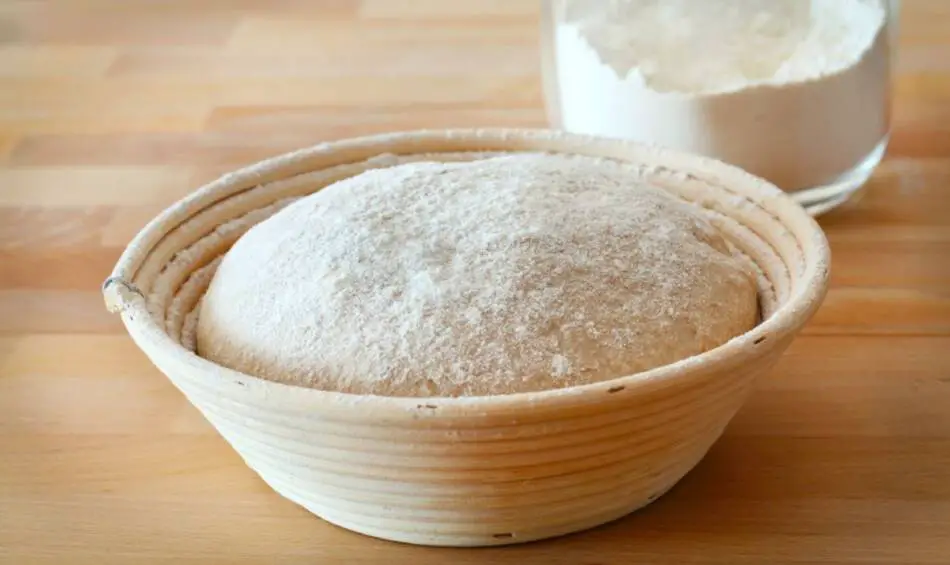A typical sourdough bread goes through two distinct phases of fermentation: bulk fermentation (first rise) and final fermentation (second rise). The question that naturally arises then would be why do we need two separate stages of fermentation, and why can’t we combine the two fermentation stages into one?
Conventional baking process:
- Mixing of dough
- Bulk fermentation
- Dividing
- Shaping
- Final fermentation
- Scoring
- Baking
The second rise (final fermentation) is required to alleviate the problems associated with a single fermentation phase, namely to prevent poor loaf volume and a dense crumb structure; the second rise allows the dough to retain its strength and replenish the fermentation gasses lost during the shaping process.
Problems that a baker will face by combining the first and second rise
Sourdoughs are often mixed and fermented in batches of dough that will make more than one loaf. Hence the large dough will need to be divided and shaped before it is scored and baked.
There are only two options available to the baker if we were to combine the two fermentation stages into one; the large dough will have to be divided and shaped either before the combined fermentation stage, or after the combined fermentation stage. Both options leads to a flat loaf with a dense crumb structure.

Baking steps for combined fermentation – Option 1:
- Mixing of dough
- Divide
- Shape
- One long continuous fermentation of many small dough pieces
- Scoring
- Baking
Option 1 is to divide and shape the dough right after the dough is mixed, so that the many smaller individual dough will undergo one continuous fermentation period before it is baked in the oven.
When the dough is shaped it develops a strong outer skin tension which helps to hold the dough in shape as it goes through the subsequent fermentation stage. However, the dough tends to relax and weaken over time after shaping.
As the dough is divided and shaped before a single long combined fermentation stage, the time the dough spends in the proofing basket is much longer compared to a dough that is subjected to a two stage fermentation.
The extended duration in the proofing basket causes the dough to relax and weaken considerably, resulting in a flattened dough that expands side ways in the oven rather than upwards.
Under the normal two-stage fermentation process, the dough goes through half of the total fermentation time (bulk fermentation) before it is divided and shaped. Once shaped, the dough is placed in a banneton for the second rise.
After shaping, the dough spends less time in the banneton in a two-stage fermentation process, preventing the dough from weakening excessively, resulting in a dough that is able to better hold its shape; the dough rises upwards instead of sideways.
Baking steps for combined fermentation – Option 2:
- Mixing of dough
- One long continuous fermentation of a single large dough
- Dividing
- Shaping
- Scoring
- Baking
Option 2 is to divide and shape the dough after it has finished one continuous fermentation period; the mixed dough will ferment as one single unit before it is divided and shaped into many smaller pieces of dough. The shaped dough is then immediately baked without any second rise.
During shaping, the dough is handled relatively roughly, as the baker folds the dough onto itself and drags the dough along the work surface to develop sufficient skin tension that holds the dough in tightly in shape. The shaping process inevitably causes the dough to lose some of its fermentation gasses.
In the case of dividing and shaping the dough after a single long combined fermentation stage, the dough is baked immediately after it is shaped, insufficient time has passed to replenish the lost fermentation gasses, resulting in a baked loaf with poor volume and a dense crumb.
Under the normal two-stage fermentation process, the dough is allowed to go through a second rise after shaping, which replenishes the dough with new fermentation gasses, puffing up the dough resulting in a baked loaf with good volume and an open crumb.

One Exception: Very high hydration sourdoughs does not require a second rise
The exception to a two-stage fermentation process is when baking sourdough with a very high hydration level typically of 80% baker’s percentage and above, such as the ciabatta or pan de cristal bread.
Very high hydration sourdough breads are typically never shaped before it is baked, this is to preserve as much fermentation gasses in the dough to achieve an airy and open crumb structure; remember that the dough loses fermentation gasses whenever it is shaped.
Since the dough is not shaped, there is no benefit of having a second rise, and for the sake of convenience, the dough goes through a single long continuous fermentation stage before it is divided and then baked.
Can sourdough bread rise three times?
Sourdough bread can be subjected to rise up to 5 times with little to no adverse affect on the resulting baked loaf.
When a dough has overproofed in the banneton, it will be excessively weak and is not able to hold its shape well. If we bake an overproofed dough, the resulting loaf will be dense and flat, with a large tunnel in the center due to a weakened gluten matrix.
The good news is that we can revive an overproof dough by removing it from the proofing basket, reshaping it, and placing it back into the proofing basket to undergo a subsequent rise. Fermentation gasses will continue to inflate the dough, and as the dough has been reshaped, it will have regain its strength, resulting in a baked loaf with good volume and an open crumb structure.
The process of reshaping an overproof dough, and subjecting it through an additional rise can be repeated up to 3-5 times with no adverse effect on the baked loaf.


